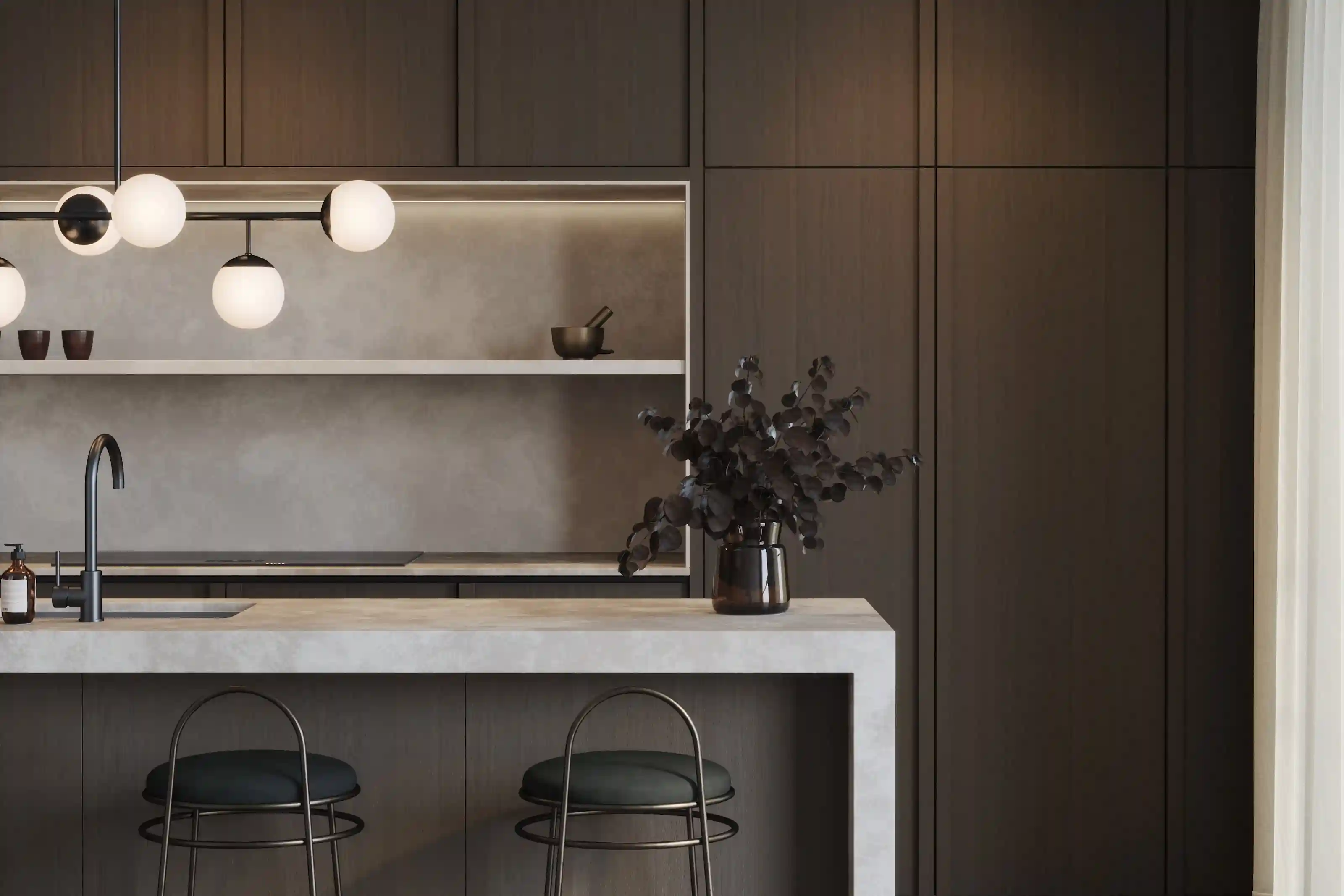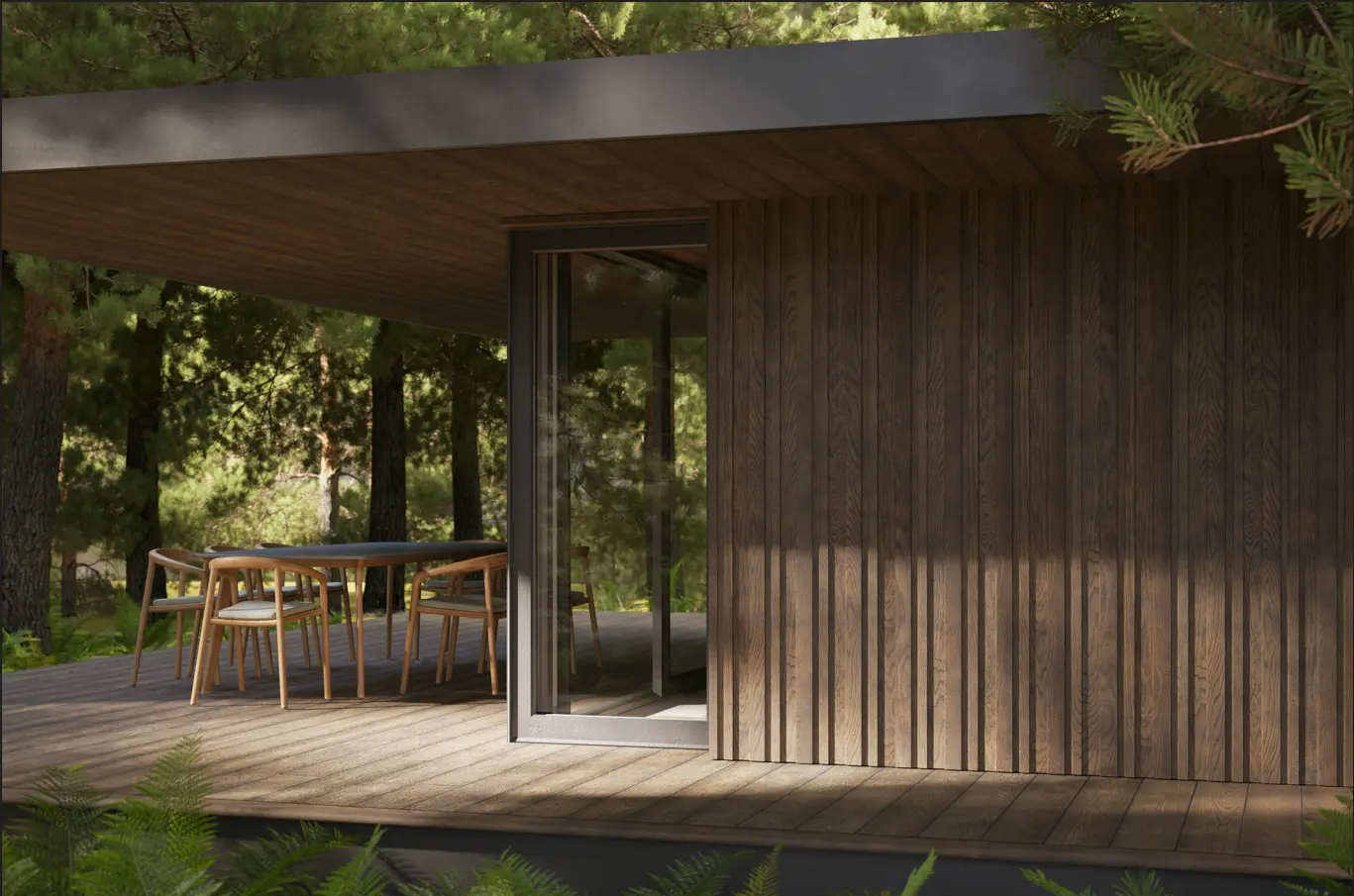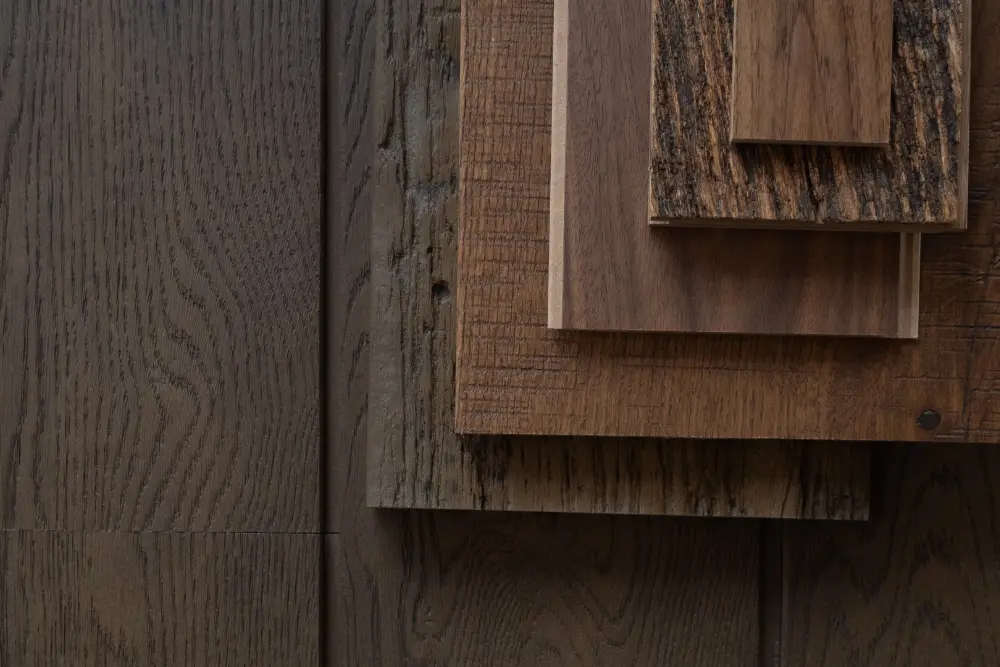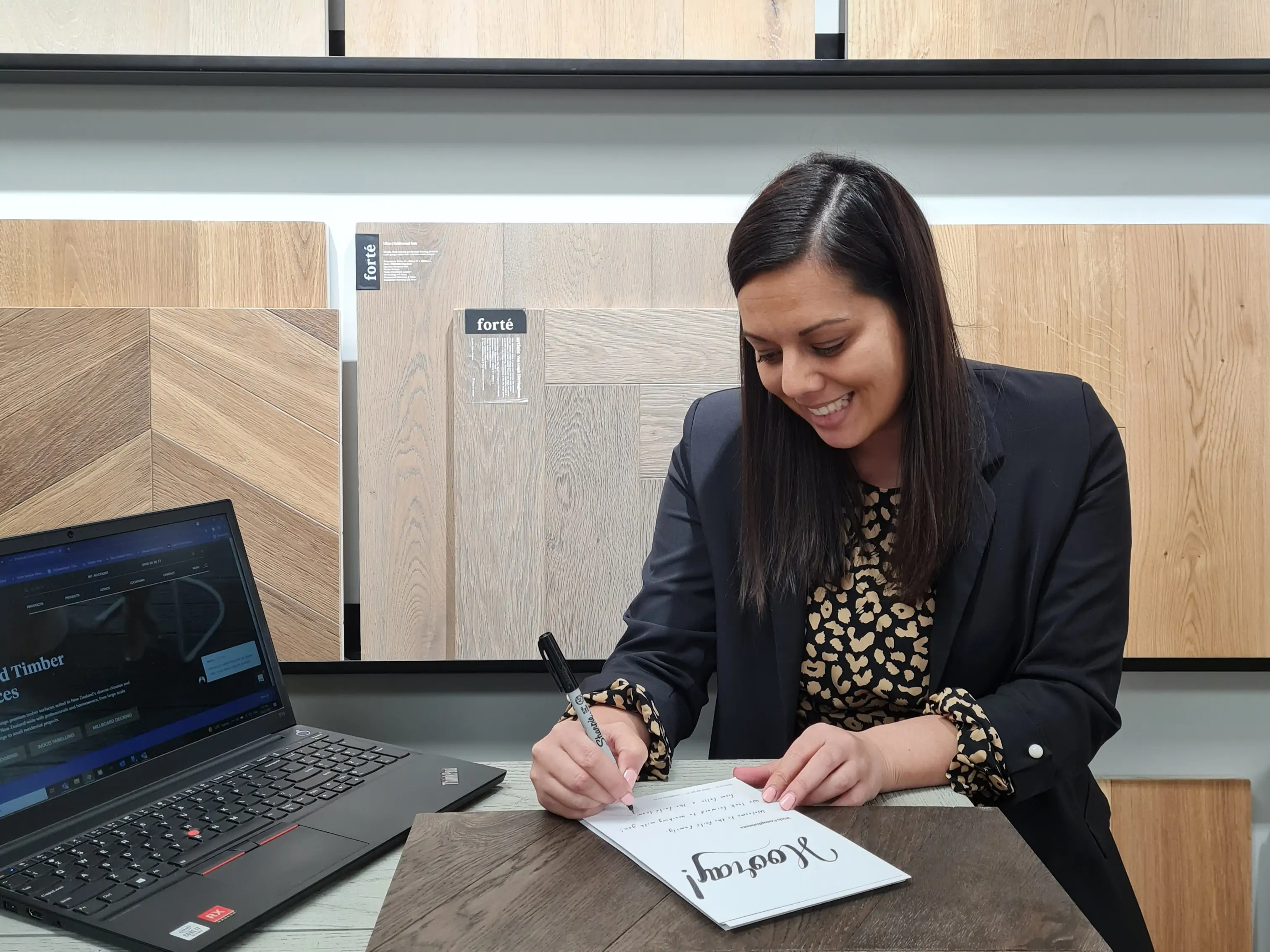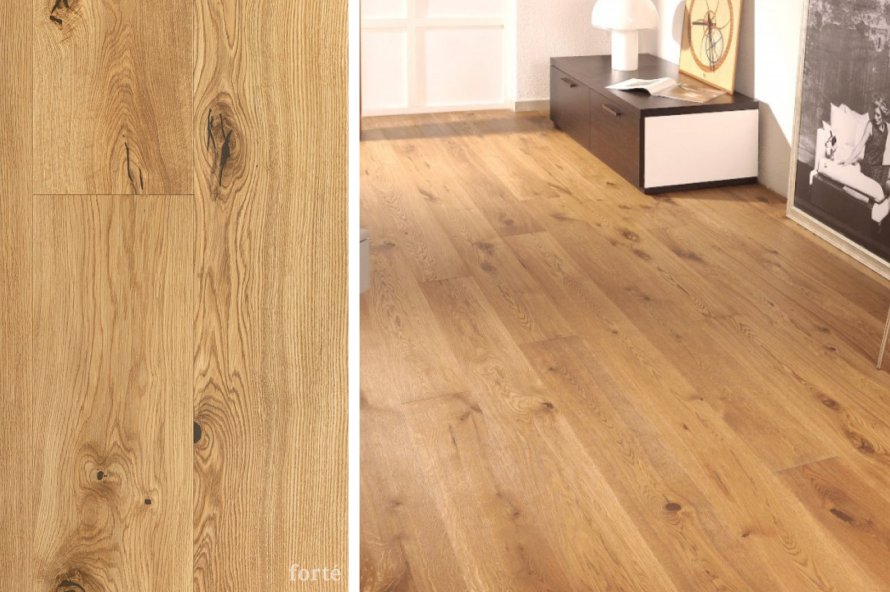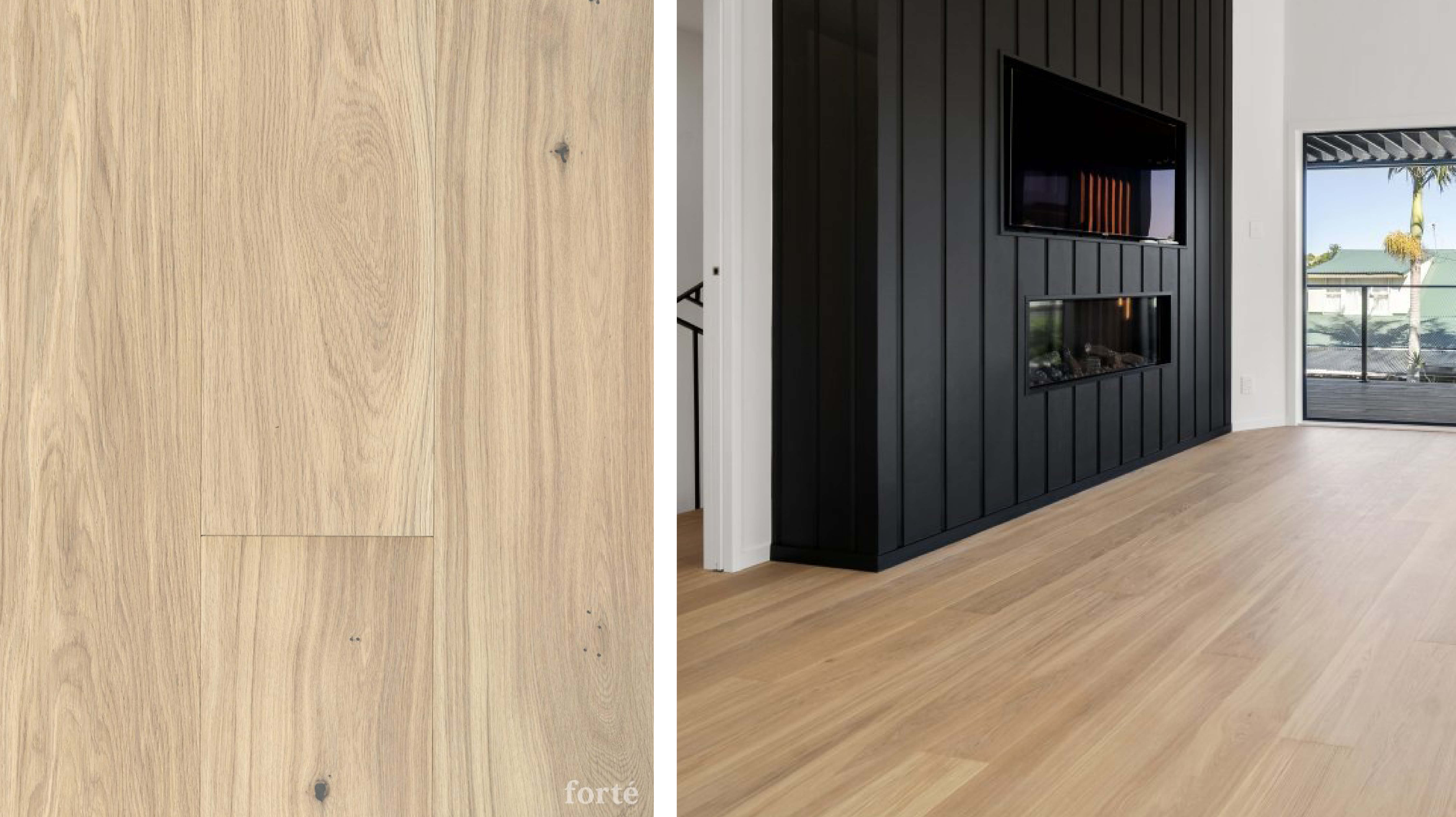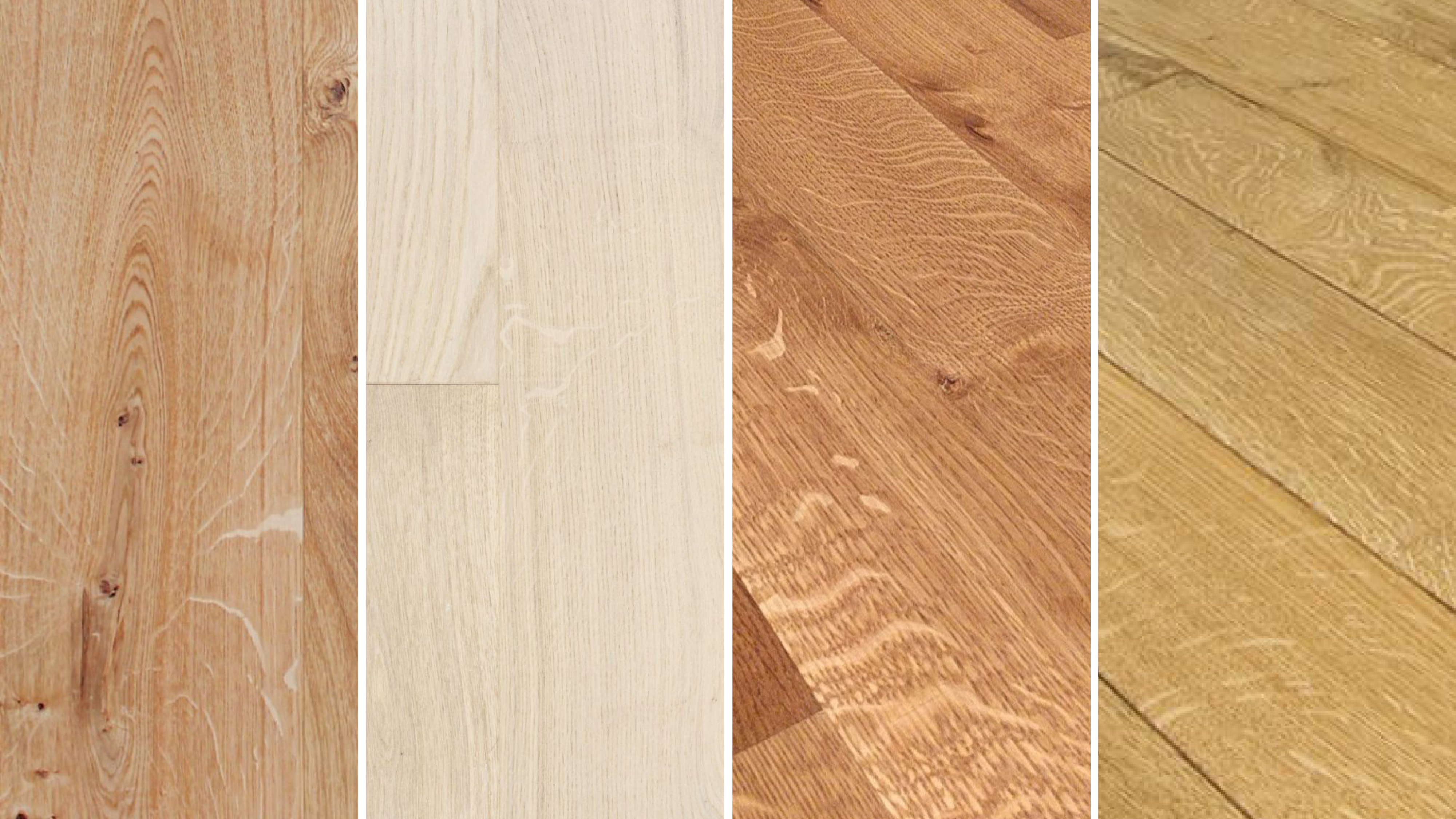Understanding the Grades and Distinctive Markings of Oak
Advice | August 23, 2021
Something we get asked about often is the different markings, patterns and colour variations that are present in the oak of our engineered wood flooring, found more commonly in a feature or rustic grade wood.
When a supplier refers to the character, feature, prime, rustic, light feature, select or clear of wood flooring, they are referring to the grade of the wood. These are names that represent the appearance of the wood and the amount of character present in the wood such as medullary rays, knots, cracks and sapwood to name a few.
With wood being one of the most natural and unprocessed materials, and each tree having its own original features due to the environment and conditions in which it was grown, each plank ends up having its own unique character and markings.
While some prefer the look of a prime or light feature grade, which has very little markings, many are drawn to the imperfections and rustic feel that a feature grade offers.
Below we’ll explain the different grades of wood, as well as the distinctive colour variations and markings that are present in feature or rustic grade wood and how the planks have come to have such markings. The markings and grades have no effect on the quality or strength of the wood, they merely contribute to the appearance of the planks.
Grades of Oak
Prime Grade
The most expensive grade due to its clean and minimalistic appearance is Prime (or select) Grade. This grade of Oak has little character or feature, if any, and minimal colour and grain variation.
Prime Grade Oak is more expensive than other grades as it is harder to come by due to there only being a 10% yield of prime or select grade oak in one tree. The planks are cut from the centre of the tree giving it a uniform appearance.
A good example of our Prime Grade wood flooring is Ultra Marbled Oak, a beautiful off-white coloured European Oak with mainly clear planks and occasional minor knots, giving the feeling of simplicity to your room.

Light Feature Grade
A grade of wood with slightly more feature than a Prime Grade wood is called Light Feature Grade. This means the boards will be fairly clear but will contain a small amount of knots, general feature and colour variation, giving the floor a cleaner look.Due to the small amount of feature present in the boards, a Light Feature Grade wood will sit in the mid-high range for pricing.
A popular example of this grade of wood is Moda Altro Capri Light Feature, a pastel blond European Oak with fairly clear boards that create a natural brightness in any interior space.
Feature Grade
A mid-range grade of wood is called Feature Grade. This grade has a higher level of natural characteristics as opposed to a Prime Grade, with larger and more frequent knots and cracks filled with an epoxy, as well as an increase in colour and grain variation.
Due to its increase in general feature and characteristics, it sits in the mid-range for pricing.
Moda Altro Sorrento Feature is a classic example of a Feature Grade, with its warm golden tones and natural characteristics, bringing nature’s soft touch to your interior.
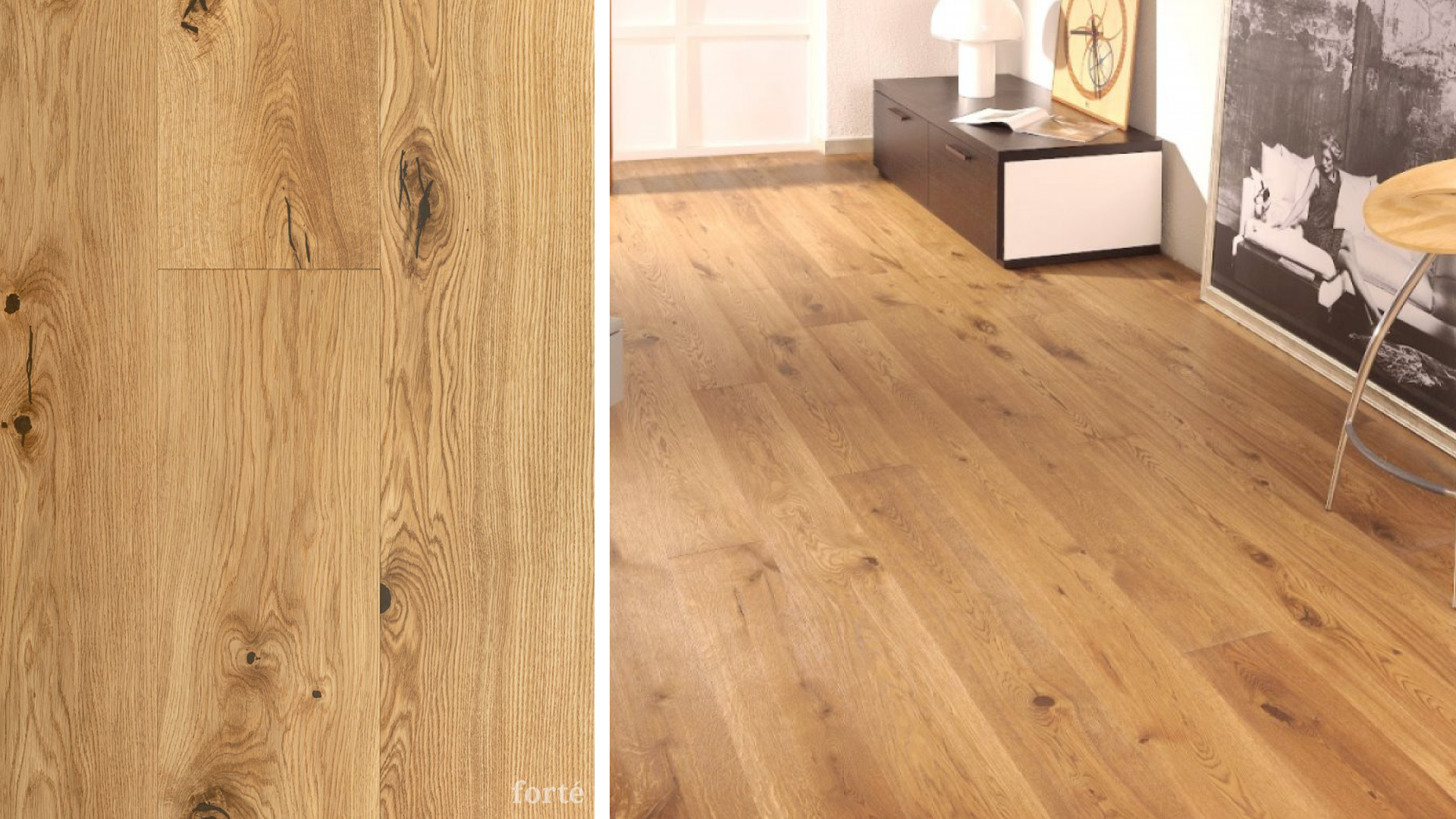
Rustic Grade
A Rustic Grade Oak is a heavy character grade with unlimited knots of all sizes, extensive colour and grain variation and tends to be the least expensive grade.
This grade can include open surface cracks, knots and pinhole giving it a rougher texture and a more unrefined and natural appearance.
A popular Rustic Grade product is Artiste Rustic Vermeer with its luxurious brown colour and tactile qualities. Vermeer’s Oak wear layer has been intensely smoked, resulting in extreme darkening of the wood throughout and adding to the increased colour variation. The surface has been heavily brushed to reveal the natural wood grain texture, celebrating the deep knots and tonal differences.

Markings of Oak
Medullary Rays
Medullary rays are ‘tiger-stripe’ looking distinct rays, waves or flecks against the grain which extend radially from the centre of the tree outwards. They have a pale coloured, natural appearance in wood and are an indication that your flooring has been crafted from quality quarter-sawn oak.
Before a tree is sawn, it has a network of vein-like cells inside the trunk that transport nutrients from the heart of the tree to the extremities. When the tree is milled, certain cuts (usually those made to the top and bottom of the log) run across the tree's vein-like cell structure at an angle, resulting in these unique vein-like markings known as medullary rays.
Medullary rays are also known as Oak figure or mirrors and can appear to have a shine to them, gleaming under direct sunlight.
Knots
Knots are unique circular or oval-shaped imperfections in the wood grain, with a darker coloured centre, occurring naturally in trees where the base of a branch grows out of the main trunk. These markings vary in size and can extend deep into the trees core.
There are two types of knots - dead knots, where the core has fallen out or been removed and is filled with an epoxy, and live knots where the core is intact and does not require filling.
Knots give a unique, natural character to wood flooring and are more commonly seen in Feature and Rustic Grades.
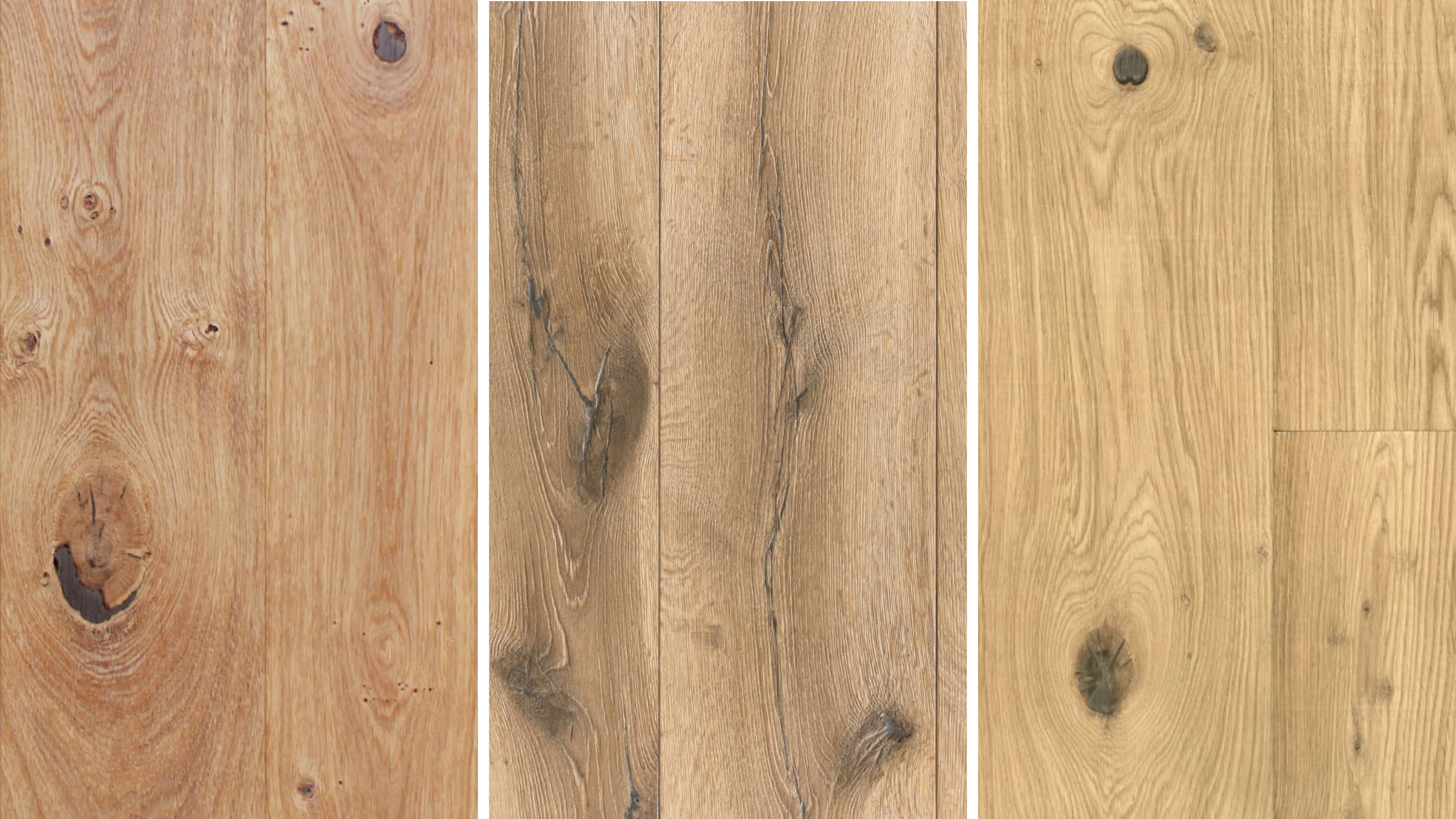
Sapwood
Sapwood is a distinct lighter coloured streak in the outermost portion of a tree trunk that acts as a ‘pipeline’ through which water passes from the roots to the leaves, making it a natural occurrence rather than a defect.
Sapwood is the younger wood of the tree that grows around the older, darker centre of the tree (the heartwood) and darkens as the tree grows. Sapwood in wood flooring becomes more prominent over time when exposed to sunlight/SUV.
If you choose a Prime or Select Grade wood flooring, then the less sapwood your planks will have. Staining the planks can help blend the natural characteristics together and may lessen the appearance of sapwood, however it will not eliminate them.
Roasted or fumed wood has very distinctive sapwood as the heating process causes even greater colour contrast making the sapwood even more prominent, especially over time.
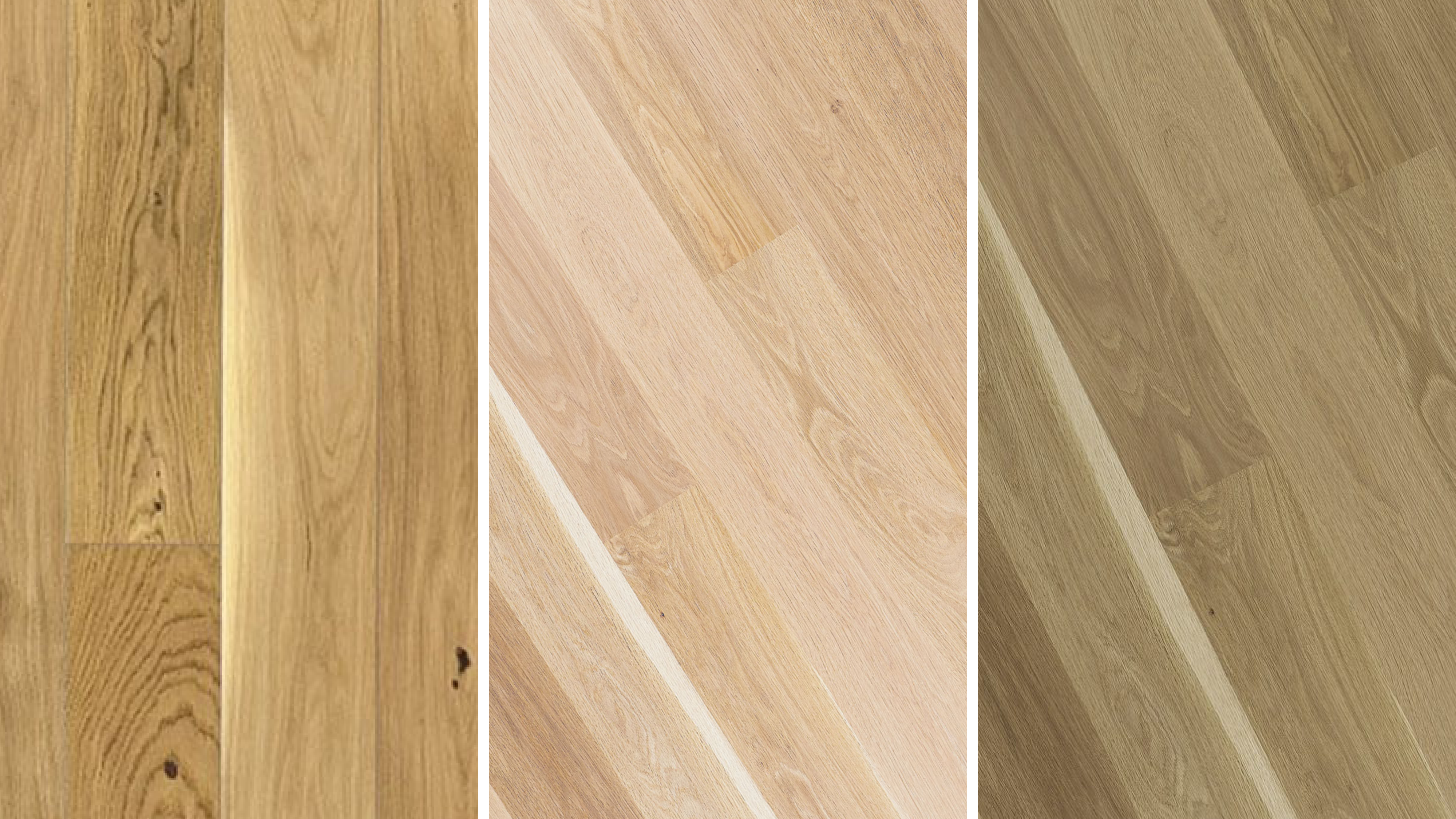
Cracks (also called Shakes)
A crack or shake is a natural-occurring split across the grain of the wood. There are many causes for cracks such as uneven drying of the wood, high winds, frost or trees being felled past maturity.
These cracks are usually filled with epoxy but in some cases, particularly with a Rustic Grade wood, may be part-filled to add to the character or feature of the floor. The number and size of the shakes in your flooring is again affected by the grade you choose.
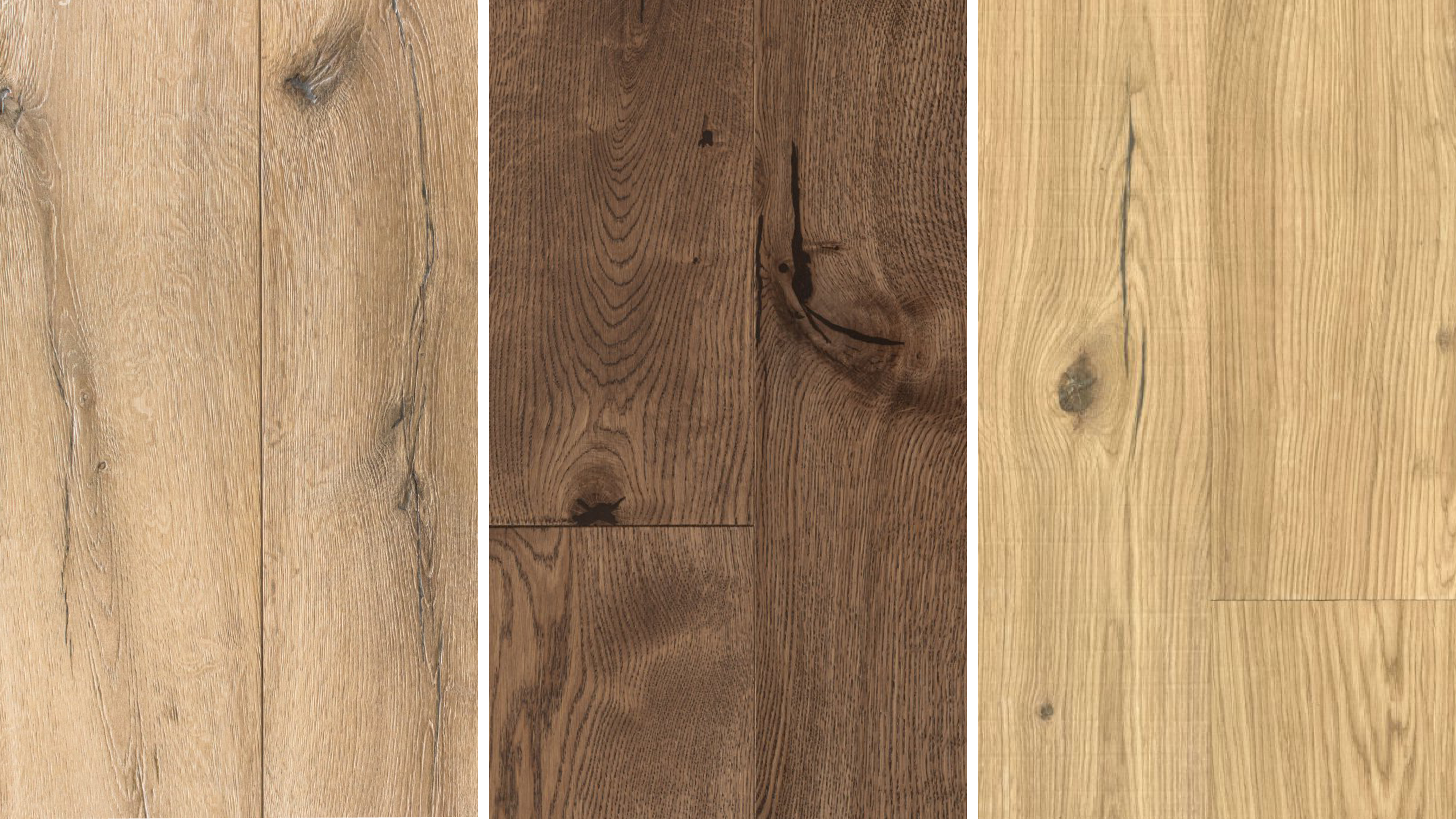
Pinhole
Pinhole is a series of tiny black holes, caused by Oak pinhole borer, and commonly found in wood flooring. The borer lays its eggs and the larvae bore deep into the heartwood of stressed Oak. Borer cannot survive once the wood has been dried out and are gone before the wood is crafted into planks.
Flooring with pinhole can usually be found in any grade below Prime Grade.
Figuring
Figuring refers to the markings found on longitudinal surfaces of wood. The figure of a piece of wood can be linked to factors such as its grain and the way it was cut, or it may be due to the unique properties of the timber.
Types of figuring include 'cats paw' / 'bears paw' / ‘bear scratches', pinhole and swirl. Figuring can also occur as a result of a burr (or burl) where a tree growth has grown in a deformed manner, extending far into the trunk, and has affected the grain.
Burrs contain very unusual wood that is highly figured and very sought-after, especially by the woodworking industry.

All of the markings mentioned above have no effect on the strength of the wood flooring, but merely play a role in the appearance of the wood and how it is graded.
If you have any questions about the markings on our products or would like some advice on what grade of wood flooring is right for your project, call our team of experts on 0508 35 66 77, email us at [email protected] or live chat with us on our website.

